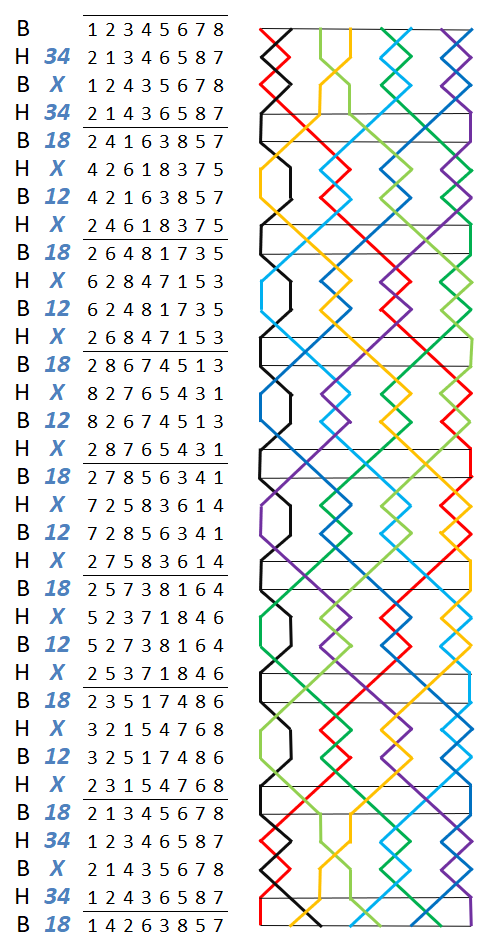Kent Treble Bob Major
Introduction
Kent Treble Bob is normally the first method to be tackled after the simpler Plain Methods.
Kent preserves the natural coursing order of Plain Bob while offering the added interest that comes with Treble Bob Hunting.
Treble Bob Hunting for the treble creates a rhythm and pace markedly different from the Plain Methods,
ringing Kent is a more relaxed process than Plain Bob, and has much musical interest.
Overview
Place Notation:
34-34.18-12-18-12-18-12-18, 18, Bob 14.

Diagram: Kent Treble Bob Major, Plain Lead, change-rows and grid.
After Plain Bob, the grid looks very busy.
However, it should be noted that when the treble is dodging in 1-2, Kent places are made, and when the treble is elsewhere the structural elements are all found in Plain Bob.
Kent Treble Bob Major, The Rules
The treble rings treble bob hunting.
When treble dodges in 1-2, Kent Places are made in 3-4 and the other bells dodge.
When treble dodges above 1-2, the structure is as per a Plain Bob Lead End.
When treble hunts between dodging positions, all the bells ring Plain Hunting.
|

